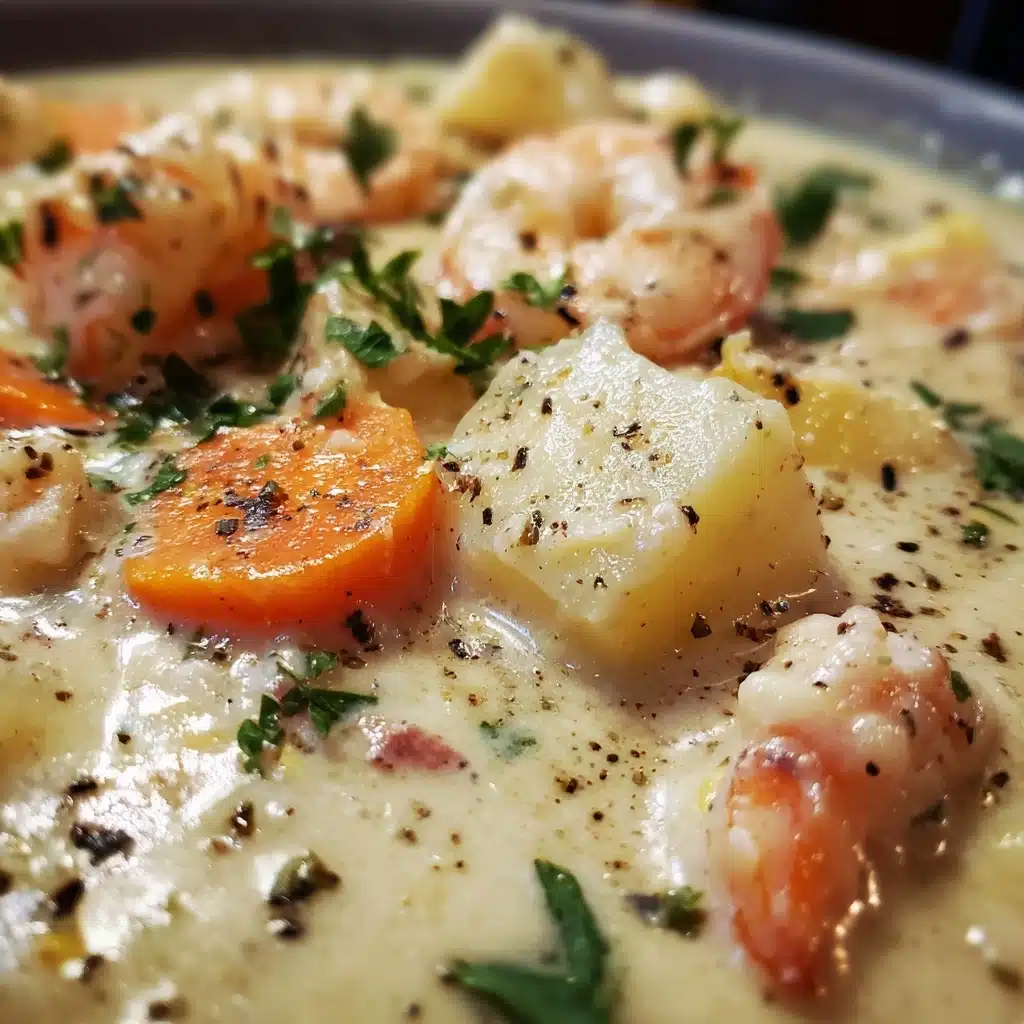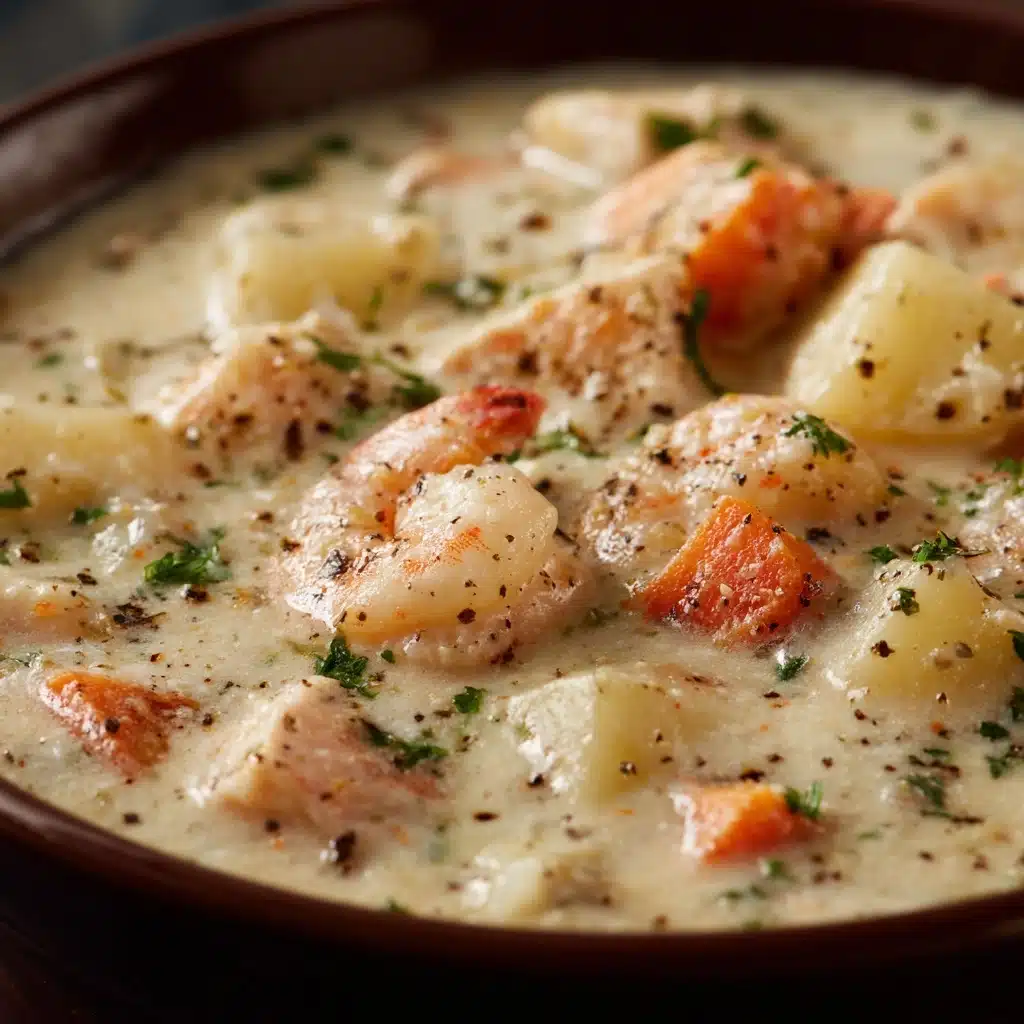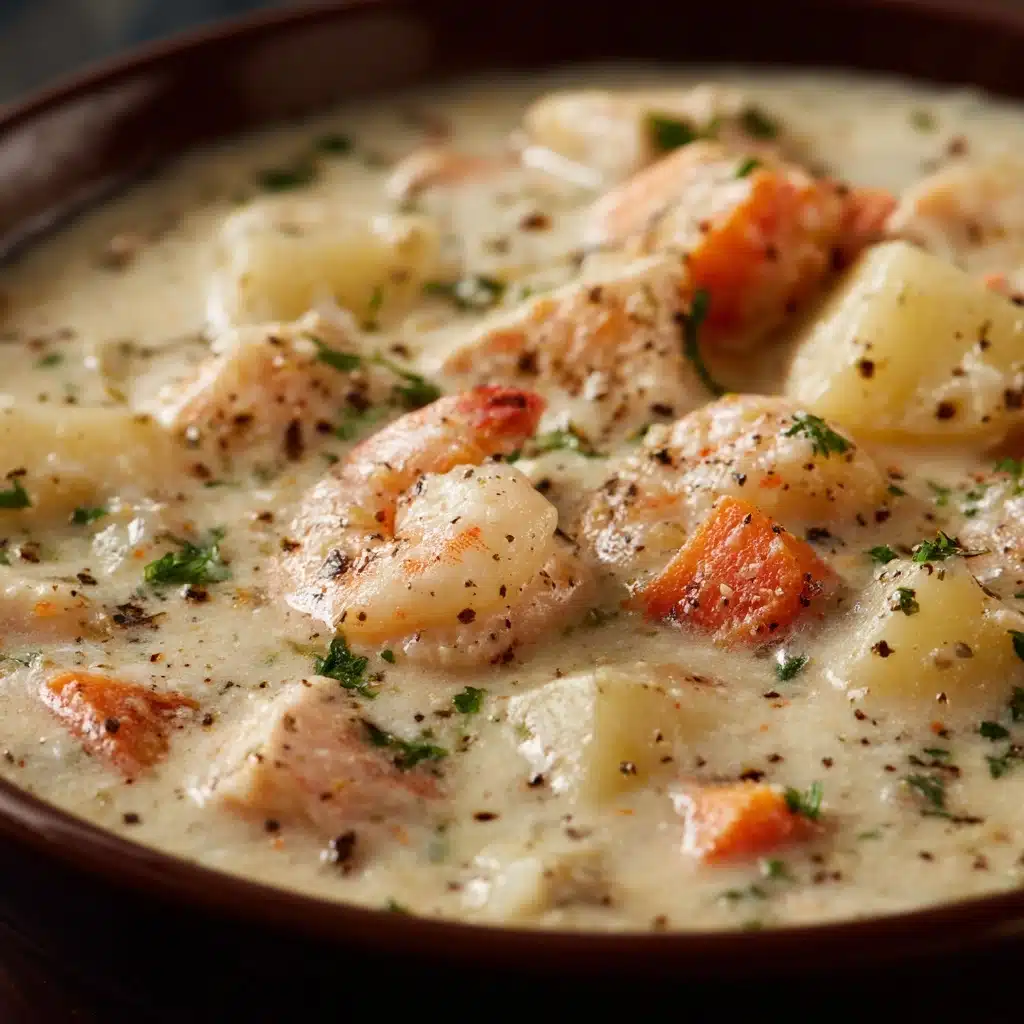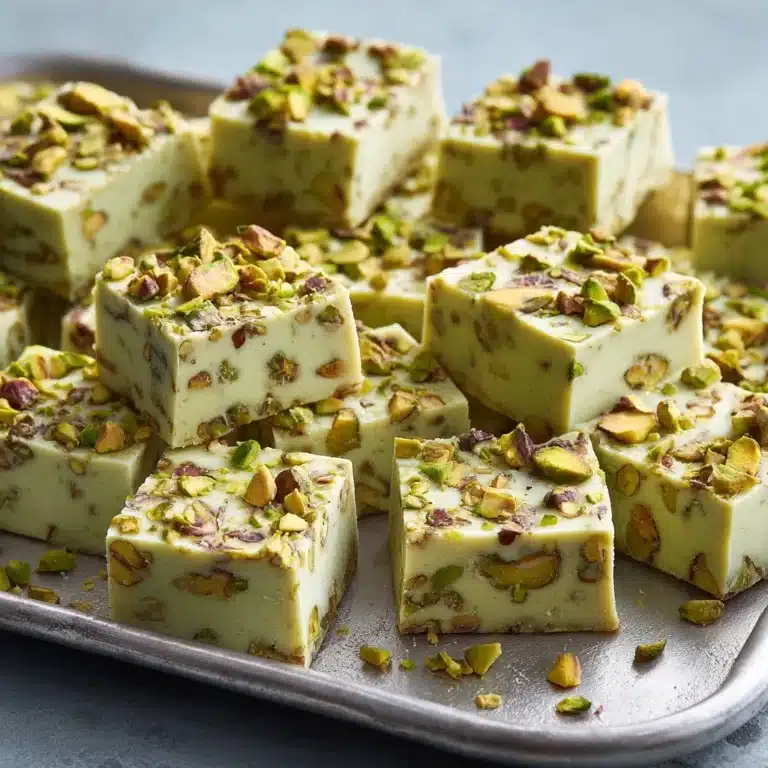Nova Scotia Seafood Chowder Recipe
There’s something truly magical about a steaming bowl of Nova Scotia Seafood Chowder. This heartwarming dish showcases the vibrant flavors and delicate textures of Atlantic Canada’s freshest catch, simmered gently in a creamy broth with tender potatoes and just enough aromatic vegetables to make each spoonful comforting and complex. Whether you’re looking to capture cozy coastal vibes or impress guests with flavors straight from the Atlantic shoreline, this recipe is an invitation to experience the East Coast’s culinary heritage right in your own kitchen.

Ingredients You’ll Need
Crafting the ultimate Nova Scotia Seafood Chowder starts with simple, quality ingredients—each one playing a starring role in building layers of flavor, creaminess, and color. Let’s explore what brings this chowder together!
- Butter: Adds richness and helps sauté the vegetables for maximum flavor.
- Olive oil: Balances out the butter and gives a lovely sheen to the base.
- Onion (finely chopped): Brings a sweet, aromatic foundation to the chowder.
- Celery (diced): Adds crunch and a mild, savory depth.
- Carrot (diced): Introduces sweetness and a pop of orange color.
- Garlic (minced): Gives the chowder a fragrant, flavorful boost.
- Dried thyme: Infuses the soup with traditional herby notes.
- Bay leaf: Enhances and rounds out the broth with its subtle earthiness.
- Seafood or chicken broth: Provides the base liquid and infuses savory, ocean-inspired flavor.
- Potatoes (peeled and diced): Make the chowder hearty and help naturally thicken the broth.
- Heavy cream: Gives your chowder a dreamy, luxurious texture.
- Whole milk: Lightens the cream while ensuring the chowder is still rich.
- White fish (haddock or cod, cut into chunks): Mild and flaky, the classic seafood chowder choice.
- Scallops: Sweet and tender, they melt in your mouth—chowder perfection.
- Shrimp (peeled and deveined): Brings a briny, slightly chewy bite to each spoonful.
- Cooked lobster or crab (optional): For a touch of luxury, toss these in for a truly authentic East Coast experience.
- Salt and pepper: Essential for seasoning—lift and balance the flavors to your taste.
- Fresh parsley for garnish: A final flourish of freshness and color.
How to Make Nova Scotia Seafood Chowder
Step 1: Start with the Aromatic Base
Begin by heating your butter and olive oil together in a large, heavy-bottomed pot over medium heat. Once the butter has melted and starts to foam just a bit, add your chopped onion, diced celery, and carrot. Sauté these veggies together for about five minutes, stirring frequently, until everything turns beautifully soft and fragrant. This combination creates the flavor foundation that makes Nova Scotia Seafood Chowder so distinctively comforting.
Step 2: Build Flavor with Herbs and Aromatics
Toss in the minced garlic, dried thyme, and bay leaf. Stir for a full minute to release their fragrant oils and deepen the aromatic base. The perfume wafting up from the pot is your sign that rich flavors are building! Each ingredient here melds to set the stage for the chowder’s subtle garden-fresh undertones.
Step 3: Simmer the Potatoes
Pour in your broth—seafood broth if you have it, chicken broth if you don’t—and add the peeled, diced potatoes. Bring the mixture to a gentle boil, then reduce the heat and let it simmer, uncovered, for 12 to 15 minutes. You’re looking for the potatoes to become meltingly tender, which will help naturally thicken the chowder and absorb all the delicious, savory flavors in the pot.
Step 4: Add the Seafood
With the potatoes just right, gently lay in the chunks of white fish, scallops, shrimp, and—with a chef’s flourish—lobster or crab if you have some ready. Let everything simmer gently (not boiling!) for about 5 to 7 minutes, just until the seafood is opaque and perfectly cooked. This ensures every bite of the Nova Scotia Seafood Chowder is succulent and flavorful without being tough or overcooked.
Step 5: Creamy Finish
Lower the heat and stir in the heavy cream and whole milk. Taste and season with salt and freshly ground black pepper. Warm the chowder for another 2 to 3 minutes, making sure not to let it boil—this preserves the delicate texture of the fish and keeps the creamy broth silky, not grainy. Fish out the bay leaf before serving and get ready for some oohs and ahhs!
How to Serve Nova Scotia Seafood Chowder

Garnishes
A sprinkle of freshly chopped parsley atop each bowl brightens up the hearty chowder, adding just the right touch of color and vibrancy. For extra flair, consider a grind of black pepper, a mini drizzle of olive oil, or even a few oyster crackers scattered over the top. These simple touches turn each serving into a work of culinary art.
Side Dishes
This chowder is a meal all its own, but it truly sings when paired with a slice of crusty artisan bread or homemade biscuits to soak up every drop of the creamy broth. A crisp green salad laced with lemon also cuts through the richness and balances the meal beautifully—East Coast simplicity at its best!
Creative Ways to Present
For special occasions, ladle the Nova Scotia Seafood Chowder into small bowls or mugs for an elegant appetizer. If you’re feeling playful, serve it in hollowed-out sourdough bread bowls, or sprinkle individual servings with lobster meat and fresh dill for a restaurant-worthy finish. Don’t be afraid to get creative with your presentation—this chowder is ready to be the centerpiece!
Make Ahead and Storage
Storing Leftovers
Leftover chowder holds up surprisingly well! Let it cool to room temperature before transferring to an airtight container. Refrigerate and enjoy within 2 days for the freshest flavor and best texture—the vegetables and seafood stay tender, and the broth keeps its creamy consistency.
Freezing
Although Nova Scotia Seafood Chowder contains dairy and delicate seafood, you can freeze it in a pinch. Cool completely, ladle into freezer-safe containers leaving a bit of headspace, and freeze for up to 1 month. Be aware, though, that the texture of the cream and seafood may change a bit upon reheating—but the flavor will still remind you of that magical East Coast coastline.
Reheating
For the best results, reheat gently on the stovetop over low heat, stirring frequently to prevent the cream from separating and the seafood from overcooking. If you’re using the microwave, heat at half power in short bursts, stirring in between, until the chowder is warmed through. Avoid boiling, which can cause both the cream to split and the seafood to toughen.
FAQs
Can I use frozen seafood?
Absolutely! Just thaw the seafood overnight in the fridge or under cold running water first. Pat it dry to avoid adding extra moisture to the chowder, and proceed as directed. Frozen seafood makes Nova Scotia Seafood Chowder accessible all year long.
What’s the best fish to use for Nova Scotia Seafood Chowder?
Mild, flaky white fish like haddock, cod, or pollock work wonderfully. They absorb the creamy broth’s flavors and hold together without falling apart. Buy the freshest available or choose frozen fillets if that’s what you have on hand.
Can I substitute half-and-half for the cream and milk?
Yes, you can easily swap in an equal amount of half-and-half for the combination of heavy cream and whole milk. The chowder will still turn out richly satisfying, with just a slightly lighter mouthfeel.
Is it possible to make this chowder gluten-free?
Definitely! This recipe doesn’t include any flour or gluten-containing thickeners, so it is naturally gluten-free. Just be sure your broth is verified gluten-free, especially if using store-bought versions.
How do I keep the seafood from getting rubbery?
The secret is gentle heat and careful timing. Add the seafood near the end and let it simmer just until opaque and cooked through, then finish with the dairy and avoid boiling. These steps guarantee a tender, luxurious Nova Scotia Seafood Chowder every time.
Final Thoughts
Few dishes feel as inviting and soul-warming as a big bowl of homemade Nova Scotia Seafood Chowder. Whether you’re drawing on fond coastal memories or discovering this classic for the first time, I hope you’ll give this recipe a try and let it bring a little East Coast magic to your table. Enjoy every creamy, sea-scented spoonful!
Print
Nova Scotia Seafood Chowder Recipe
- Total Time: 45 minutes
- Yield: 6 servings 1x
- Diet: Non-Vegetarian
Description
Indulge in the rich flavors of the East Coast with this hearty Nova Scotia Seafood Chowder. Creamy and loaded with a variety of seafood, this dish is a comforting meal perfect for any occasion.
Ingredients
Base:
- 1 tablespoon butter
- 1 tablespoon olive oil
- 1 small onion (finely chopped)
- 1 celery stalk (diced)
- 1 medium carrot (diced)
- 2 cloves garlic (minced)
- 1/4 teaspoon dried thyme
- 1 bay leaf
- 3 cups seafood or chicken broth
- 2 medium potatoes (peeled and diced)
Seafood:
- 1/2 cup heavy cream
- 1/2 cup whole milk
- 8 oz white fish (such as haddock or cod, cut into chunks)
- 6 oz scallops
- 6 oz shrimp (peeled and deveined)
- 6 oz cooked lobster or crab (optional)
- Salt and pepper to taste
- Fresh parsley for garnish
Instructions
- In a large pot, heat the butter and olive oil over medium heat. Add the onion, celery, and carrot, and sauté until softened, about 5 minutes.
- Stir in the garlic, thyme, and bay leaf. Pour in the broth and add the diced potatoes.
- Bring to a boil, then reduce heat and simmer for 12–15 minutes, or until the potatoes are tender.
- Add the fish, scallops, shrimp, and lobster or crab if using. Simmer gently for 5–7 minutes, or until the seafood is just cooked through.
- Stir in the cream and milk, and season with salt and pepper to taste. Heat gently without boiling for another 2–3 minutes.
- Remove bay leaf, garnish with fresh parsley, and serve hot with crusty bread.
Notes
- You can make the base ahead and add seafood just before serving.
- For extra richness, replace milk with more cream or add a splash of white wine with the broth.
- Prep Time: 15 minutes
- Cook Time: 30 minutes
- Category: Main Course
- Method: Stovetop
- Cuisine: Canadian
Nutrition
- Serving Size: 1 bowl
- Calories: 320
- Sugar: 4g
- Sodium: 580mg
- Fat: 18g
- Saturated Fat: 9g
- Unsaturated Fat: 7g
- Trans Fat: 0g
- Carbohydrates: 18g
- Fiber: 2g
- Protein: 22g
- Cholesterol: 115mg







